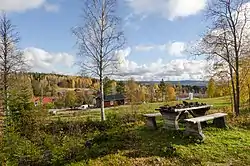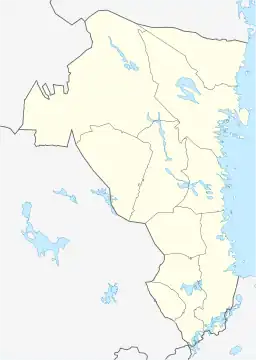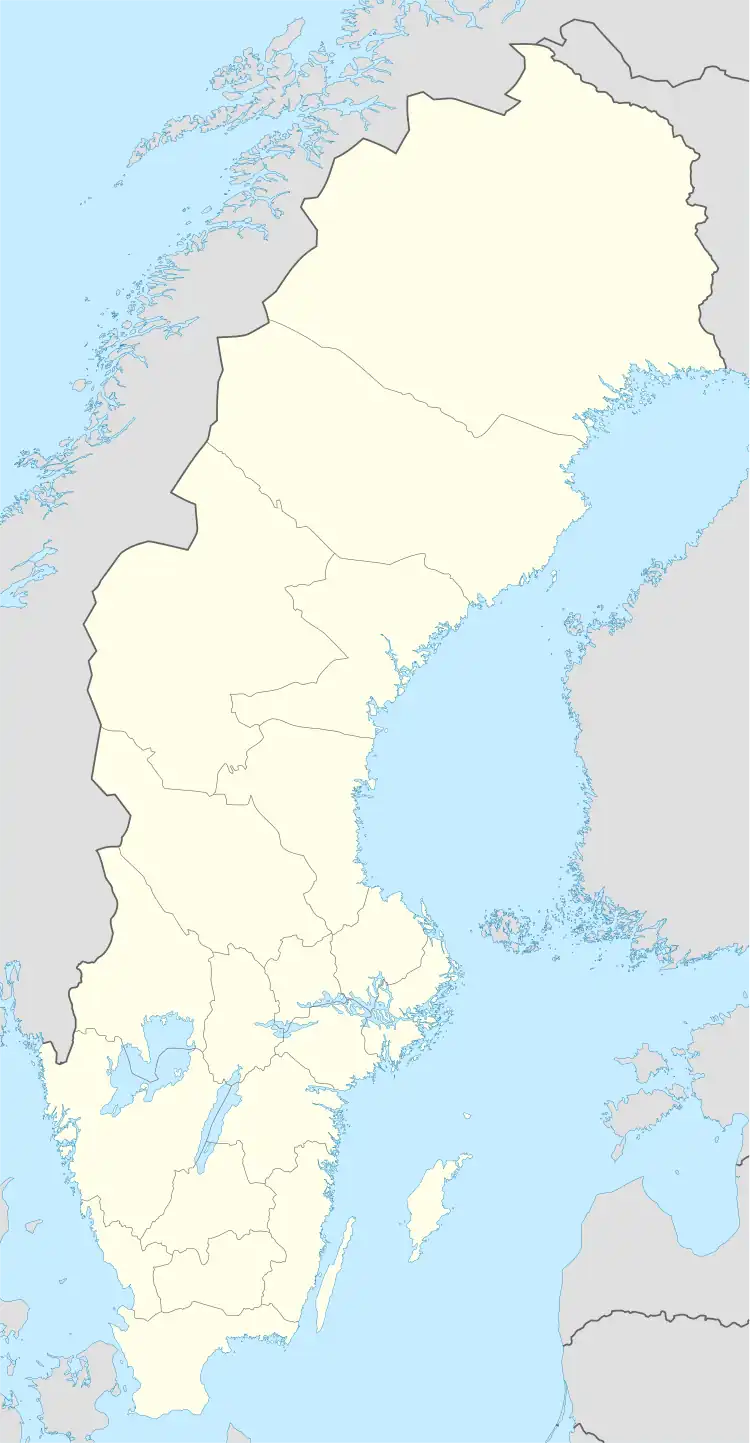Los, Sweden
Los is a locality situated in Ljusdal Municipality, Gävleborg County, Sweden with 332 inhabitants in 2020.[1]
Los | |
|---|---|
 Los seen from the site of the former Los cobalt mine. | |
 Los  Los | |
| Coordinates: 61°44′N 15°10′E | |
| Country | Sweden |
| Province | Hälsingland |
| County | Gävleborg County |
| Municipality | Ljusdal Municipality |
| Area | |
| • Total | 1.61 km2 (0.62 sq mi) |
| Population (31 December 2010)[1] | |
| • Total | 387 |
| • Density | 241/km2 (620/sq mi) |
| Time zone | UTC+1 (CET) |
| • Summer (DST) | UTC+2 (CEST) |
The village is known for its 18th-century cobalt mine, where Axel Fredrik Cronstedt discovered the chemical element of nickel in 1751. Today, the mine is a tourist attraction.
An 8-kilometre-wide crater on Mars was officially named after this village in 1979. The crater is located at 35.4°S and 76.3°W on the Martian surface.[2]
References
- "Tätorternas landareal, folkmängd och invånare per km2 2005 och 2010" (in Swedish). Statistics Sweden. 14 December 2011. Archived from the original on 27 January 2012. Retrieved 10 January 2012.
- "Mars Nomenclature: Crater, craters". Astrogeology Research Program. Retrieved 27 August 2008.
This article is issued from Wikipedia. The text is licensed under Creative Commons - Attribution - Sharealike. Additional terms may apply for the media files.